
What’s going on out on the land?

Invert Sign at Dunby Rd.
Learning more about invertebrates and the signs they leave behind is such a valuable part of wildlife tracking to me. I feel like when I teach or share about the inverts, most people are kind of “cool, but where are the mammals?” about it, but I hope to keep learning more so that I can inspire some deeper respect and awe about a couple whole other phylums! There is so much life out there, that doesn’t look like us, move like us, eat, excrete, breed or breathe like us and every time I learn something new I get stoked. I am grateful to get to share some of that excitement in this post.

Three Common Silk Moth Cocoons
Throughout the past few years I have come across a few different large cocoons belonging to Silk Moths, who are large moths in the family Saturniidae, in the order Lepidoptera. As I encounter the cocoons I tend to look them up and try to learn something about them but eventually the individual identifications of each unique species is lost, except maybe the Cecropia. I wanted to write a short blog post, starting with the main three cocoons I encounter, helping to remember who makes which cocoons so I can better remember in the field.
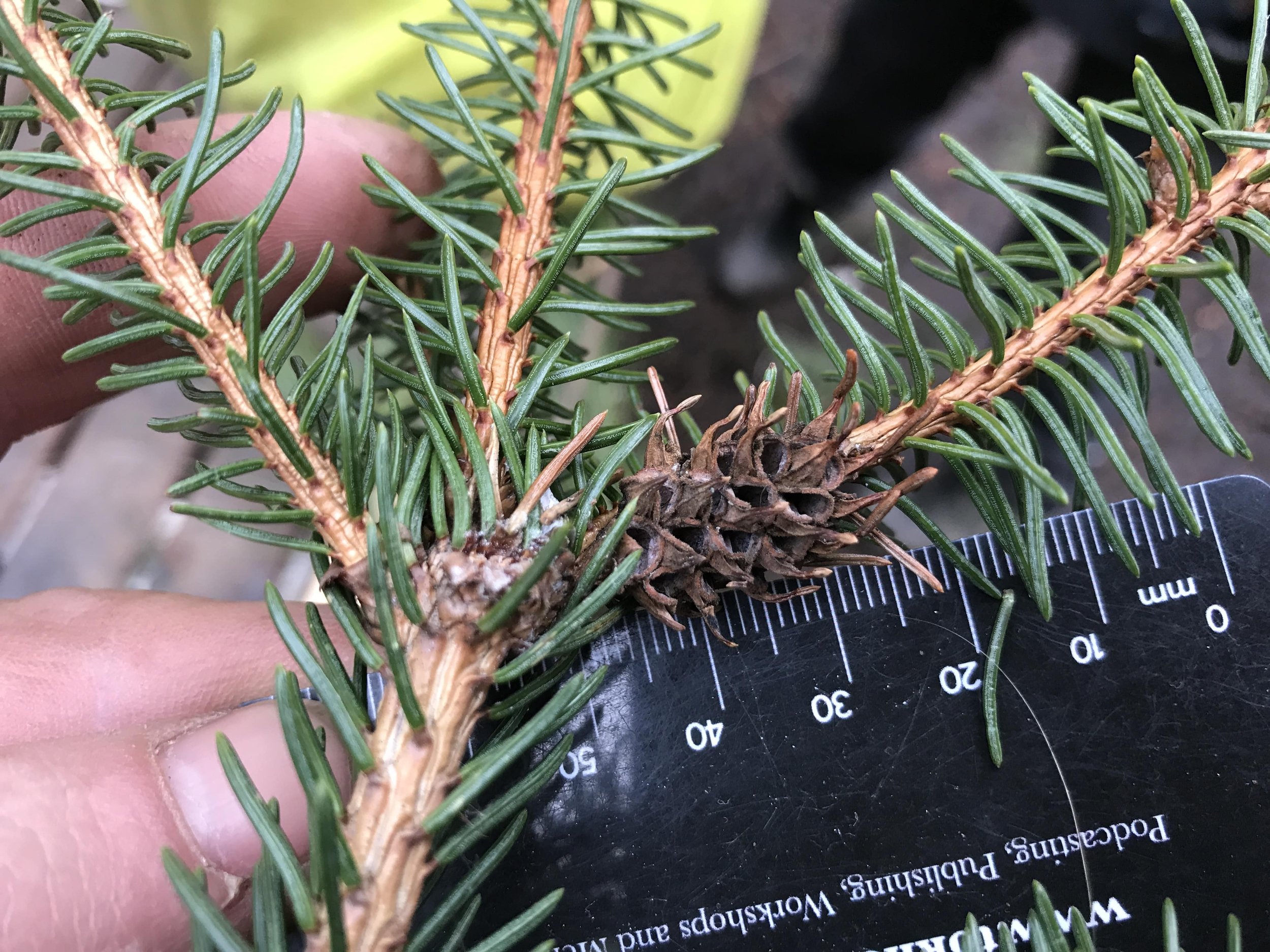
Spruce Pineapple Galls
For a few years I have come across a gall on Spruces all over the Eramosa River Valley. Most of the Spruces are Norway Spruces , but I have also found them on White Spruce. They were mysterious to me so I looked them up a couple of years ago and learned that they were called the Pineapple Spruce Gall, or Spruce Pineapple Gall, or Eastern Spruce Gall depending on who you’re asking, but that was where my knowledge ended. Recently, after coming across them again, I decided I needed to learn a little bit more about them.
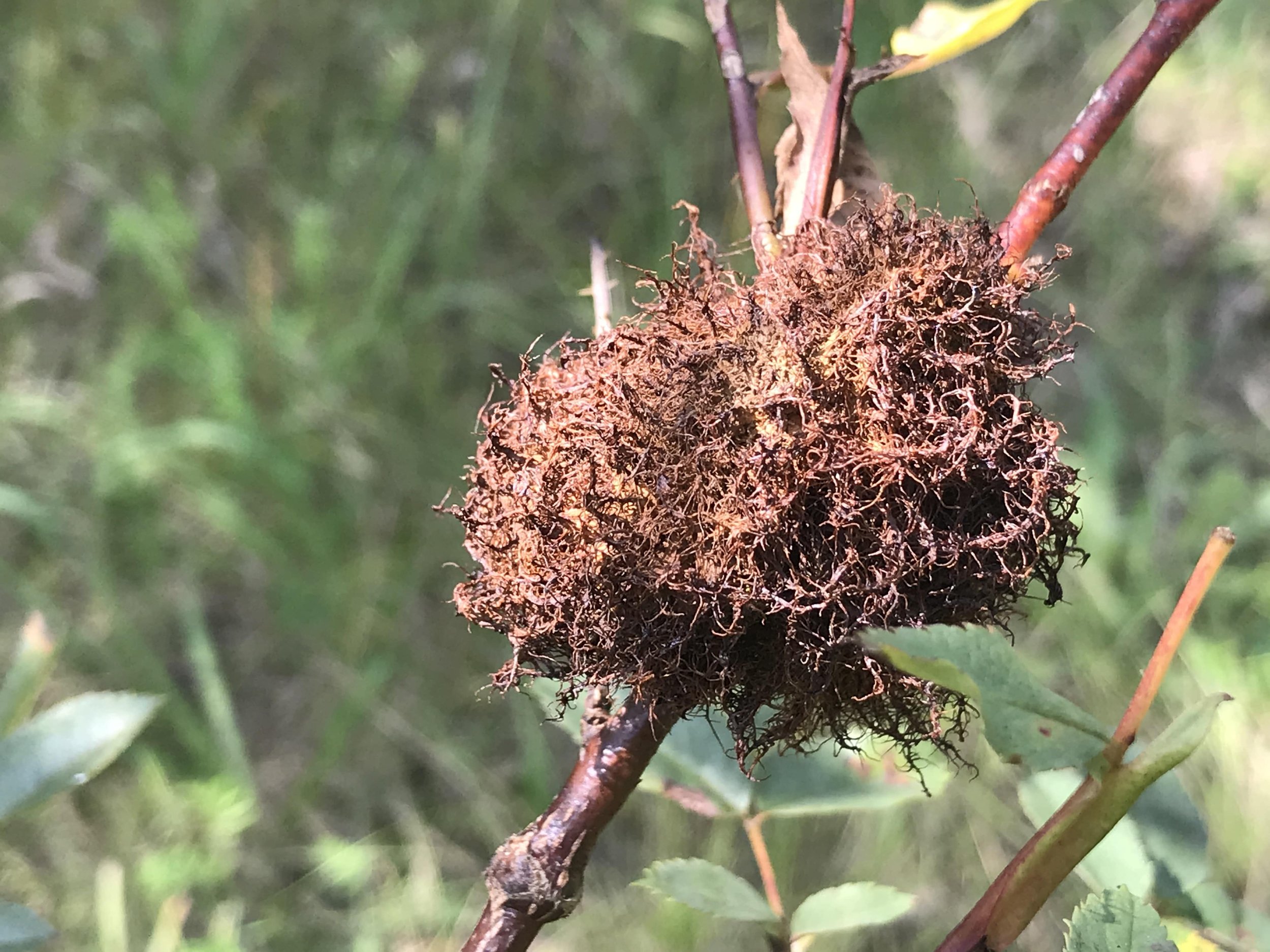
Common Galls of Southern Ontario
I wanted to compile a list of some of the common galls one might encounter here in Guelph, Ontario. I have been spotting a few lately and wanted to build a little database for myself and for others who may encounter them and want to know a little more. The galls are named by the inducer, and what I mean by that is the insect as all galls below induced by insects. I hope to make a series of posts over time.

Eastern Tent Caterpillar Egg Masses
We were in the midst of a mock evaluation at Mono Cliffs provincial park, making our way slowly through an old orchard which had been left to rewild, when Tamara called our evaluator Alexis over to ask if she could suggest a question for the evaluation. Only thing I heard from their quick conversation was “this will be a hard one”. They directed our attention to the end of an Apple branch where a small jeweled formation wrapped around a thin twig, like a bangle or elaborate armband. This broad ring or twig-band, about 3 cm long, seemed to be made up of smaller gemlike circles of gold lacquered together. These smaller circles were about .6 mm in diameter and tightly packed together. There could’ve been 200 of the small gold circles wrapped in this small shiny bundle. I made a guess right away that it must be an egg mass, but I didn’t know who made it. It was mysterious to me. I wrote out my answer and shared it with Tamara and waited for the big reveal.

Necrophila americana
Necrophila americana. This phrase isn’t a comment on the extinction culture of the North American colonial project, but instead it is the scientific name of a species within my favorite crew of insects : Carrion Beetles! The simple and concise common name of the particular species highlighted in this post is the American Carrion Beetle. Pretty easy to remember and pronounce. I love these little dudes.
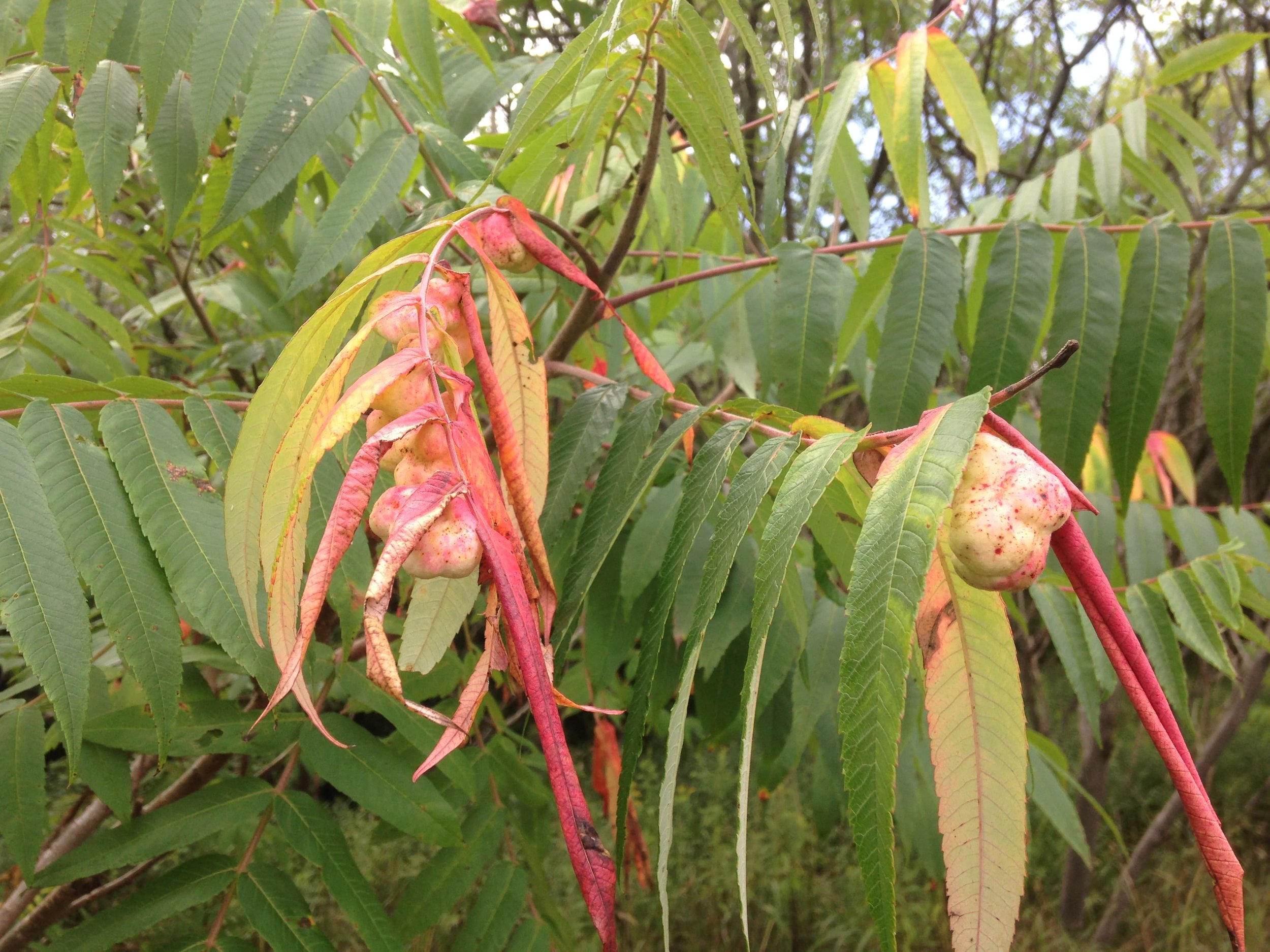
Exploring Some Staghorn Sumac Galls
A few years ago my partner and I were leading a walk at a nearby nature reserve when one of the participants looked up at a Staghorn Sumac and asked “what is this?”. I answered, Staghorn Sumac, but they clarified that they didn’t mean the shrub, but instead globular fleshy piece which sort of half dangled from the bottom of the long leaf stalk. As we looked at the soft roundish growth I realized that I had never noticed this before.
Sure, it has taken a few years of passive wonder, but this Summer I finally looked it up.

Oak Apple Galls at Lake of Bays
Someone in our tracking crew had found a small, pale brown, hollow papery orb with spots on the surface with a couple of holes in it. I recognized it as an Oak Apple Gall, which my partner and I had found last year at Backus Woods. It wasn’t a green one, but it must be the same thing, right?
Last year, I may have looked up a bit on the Oak Apple Gall, but I no longer remember much. It’s like meeting someone again, but not remembering much of the details of your previous conversation. I had to ask some questions again, and here is some of what I have learned.
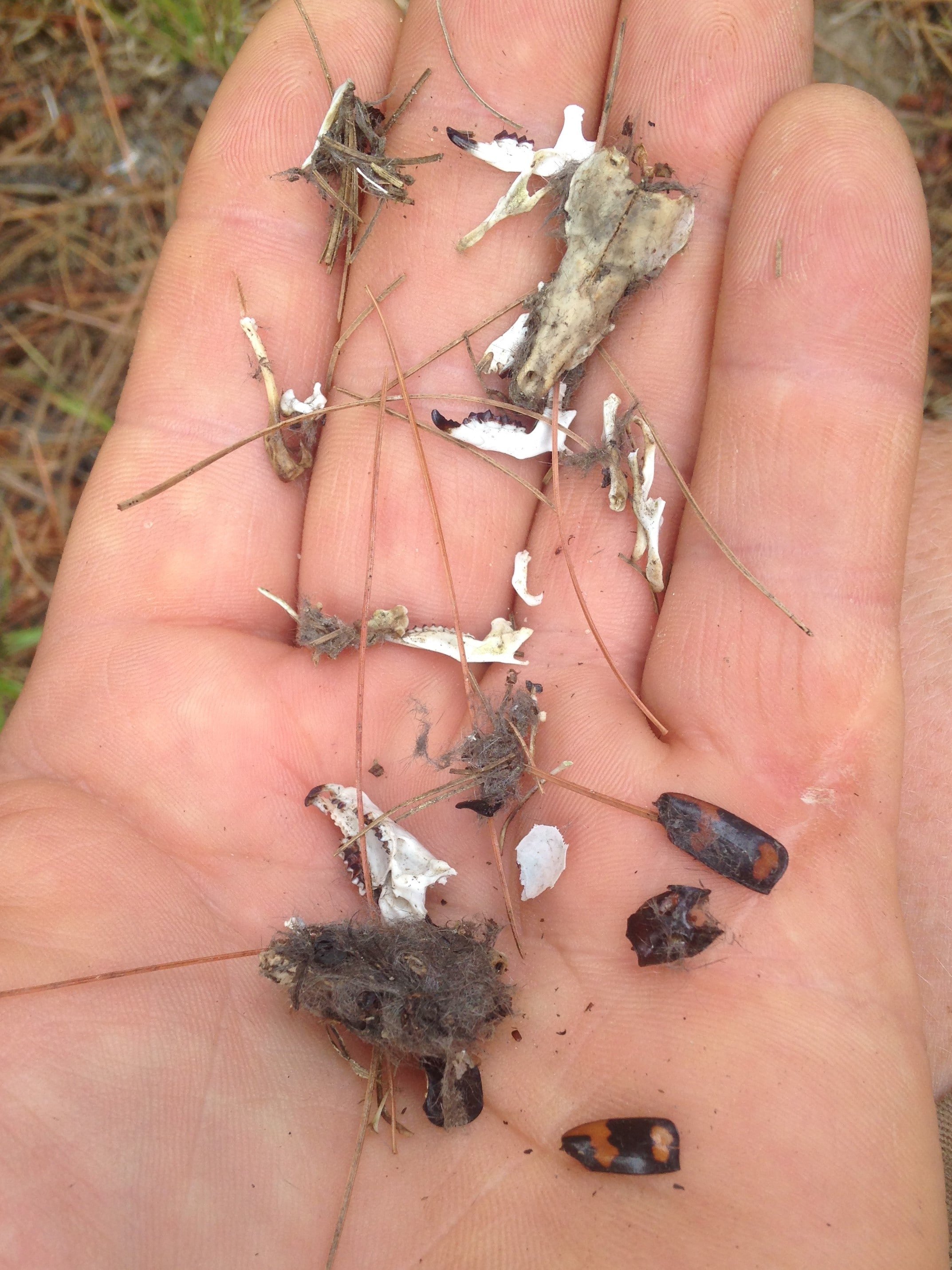
Carrion Beetles pt. 2 : Elytra in the Pellet
While out with the Wildlife Tracking Apprenticeship crew I came across some Owl pellets with some interesting finds. One of which caught my eye and pushed me to learn more about the Nicrophorinae subfamily of Carrion Beetles.

Carrion Beetles pt. 1 : Nicrophorus tomentosus
After taking a bunch of photos of the dead Robin I flipped the carcass over to see if I could see any visible signs of trauma. I noticed a wound on the back of the neck, but I got totally distracted when a small orangey-yellow thing crawled deep into the grass…
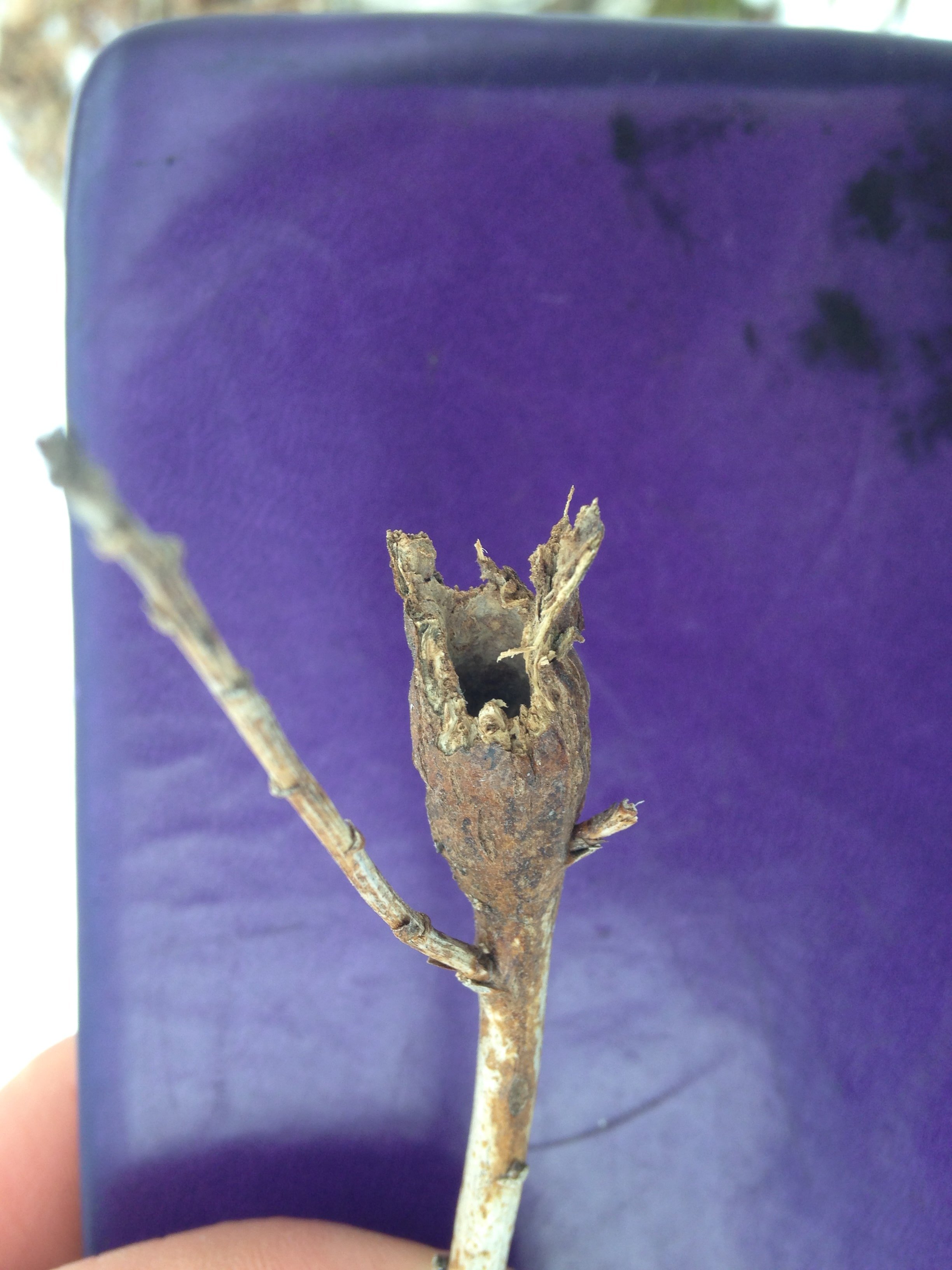
Tracking Bugs and Trees, 2022.03.05
On the drive up to Mono Cliffs, Maddie and I were talking in the car about some things we really wanted to pay attention to today. I was talking about trees and wanting to pay attention to what is going on around the trees, who is interacting with the trees, and who may be living on the trees. She had mentioned a desire to focus on bird tracks and sign, especially after focusing on Wild Turkeys for the past year. Little did we know…

Tracking Journal for 2021.08.15
I watched in awe and wonder, struck by the beauty of this ordinary everyday animal whom we all have seen, likely ignored and passed by on countless occasions. I took a few photos and just continued to watch in amazement and joy at this wonderful being who only a moment ago was pretty much invisible to me. How long had they been hanging out right beside us? Why weren’t they scared? I still havn’t researched all I’d like to but I will be digging deep into the books this week to learn as much as I can. Sometimes it just takes a short experience to open a whole world of wonder that I end up having to pursue.

Who’s this flying bug? Late Spring 2021
I know it’s past the Summer Solstice, but I found most of these bugs before the Solstice so I am counting them as such. Here are some species I am seeing out on the land that I want to learn more about.

Violets and the Telling of the Bees
What happens to the world when we stop to watch and listen? What new things do we notice? What old things do we see in new angles and shades or light? What happens to us when we stop to watch and listen? What happens to us when the world stops to watch and listen to us? Can we feel a sense of being heard and understood when we speak with pets, plants, or planet?

The First Flutterby/Butterfly of the Year.
Looking into the life cycle and natural history of the first lepidopteran of the spring, the Mourning Cloak.

Who are you?
I wanted to make a post of some of the assorted lifeforms I have been finding while out on the land. Part of the process of learning the land is to know that we don’t know much. I know those with longer standing relationships, more profound training and mentors may have considerable more knowledge and experience, but we all start somewhere and I’m trying to learn all I can.

More Praying Mantis questions from the Question Book
So again, these are some of the questions that I write up through the days while I am out on the land. Curiosities and wonderings, incomplete understandings and unknowns. If I don’t write them down, I’ll never remember to look them up.
As I keep seeing them out on the land, I keep wondering about the Praying Mantis and what their habits are. Time to share what I am learning.

A couple from the Question Book pt. 1
A couple of questions, a couple of answers from the Question Book.
